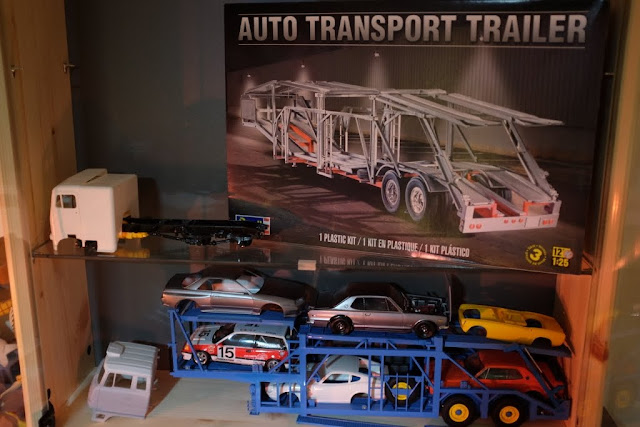As noted in previous posts, I should probably stop buying new kits while I catch up on the backlog of incomplete or unbuilt kits.
Yeah, right.
Two packages turned up in the mail yesterday. The most interesting one was Model Factory Hiro's Abarth OT 1300, in the version commonly known as the 'Periscopio', due to the funny little scoop mounted on the roof to feed cool air to the cabin (or the carbs, as some web sites claim, but the photographic evidence supporting this assertion is a little thin).
Now faithful readers will recall my struggles with MFH's Porsche 908/03. This has proved to be a major challenge, with a huge number of white metal bits, such as chassis tubes, that are easily bent out of shape, and that have miniscule little dowels that are way too easy to shear off when you try to fit them into equally small sockets, and which are thus very difficult to get right. In fact the last post on this kit was November 2, 2014 (
here) when I mistakenly concluded that Mr Carpet had eaten one of the warning lights on the dashboard; as a result I set the 908/03 aside in order to actually finish something. I also have MFH's 917, which I have not started but which looks to be equally challenging. So buying the Abarth was a bit risky.
No worries, however; at first glance the body and chassis consist of two very nice molds, complemented by front and rear opening body pieces that fit very well indeed at this early stage. There are a lot of white metal bits but most are engine or suspension related; it looks to be a much easier build (although still not for the faint of heart).
Why the Abarth, you ask? Like the Alpines, it is an obscure, very attractive little car, and obviously channels the singular passion and vision of the founder (Carlos Abarth in this case). It is iconoclastic, uncompromising and unique. As with a lot of Abarth creations, it is loosely based on cheap Fiat or Simca sedans of the late '50s and early '60s. In particular it has a water-cooled 4-cylinder motor hanging out the back, a short-stroke, twin-cam, twin-plug 1290 cc little bomb making an estimated 145 horsepower, all of it probably available in a sudden onslaught between 4500 and 6000 rpm.
Note 145 hp from 1290 cc is 112 hp/litre, or a whopping 1.84 hp/cu.in. Without a turbo. Like I said, a little bomb. A 327 cu.in. Chevy small block would need make 600 hp to match this specific output.
Supercars.net has a few photos but clearly they are of at least 5 different cars. I assume there is an official Abarth history out there somewhere, complete with serial numbers, but I am fully expecting the production numbers for this car were low (50 units to meet homologation requirements, according to Supercar.net) and that no two cars were alike. Going on the instruction sheet (which includes colour photos of one particular 1:1 car taken in a yard somewhere in 1993), I would assume the kit attempts to replicate
this car.
At the same time, I ordered a kit of the gorgeous Aston Martin DB4 Zagato, but this unfortunately is out of stock. I've enquired as to the availability of the Cobra Daytona Coupe, but no reply yet. These two cars, along with the Jaguar D-Type and Ferrari 250 GTO, are rightfully the sexiest cars on the planet.
The other package included an out-of-production Monogram model of a 1985 Mustang IMSA GTP car with a turbocharged 4 cylinder motor, a resin 1955 Chevy Suburban body from Jimmy Flintstone that needs a '55 through '57 Chevy pickup kit to complete, and finally the well-known and very detailed Accurate Miniatures McLaren M8B in Lothar Motschenbacher trim. The 36-page instruction book (this is definitely not a 'booklet' or a 'sheet') includes such items as 'Now let it dry and just stare at it'... Model Car Garage offers a photo-etched sheet with added detail bits which I will try to track down.
Excluding the assortment of Jimmy Flintstone bodies, most of which are lacking a conventional kit to supply chassis bits, the completed models are now out-numbered by the incomplete ones by 69 to 53.



















.jpg)
.jpg)
.jpg)
.jpg)
.jpg)
.jpg)
.jpg)
.jpg)
.jpg)
.jpg)
.jpg)
.jpg)
.jpg)
.jpg)
.jpg)
.jpg)
.jpg)
.jpg)

.jpg)
.jpg)
.jpg)
.jpg)
.jpg)
.jpg)
.jpg)
.jpg)
.jpg)
.jpg)

.jpg)
.jpg)
.jpg)